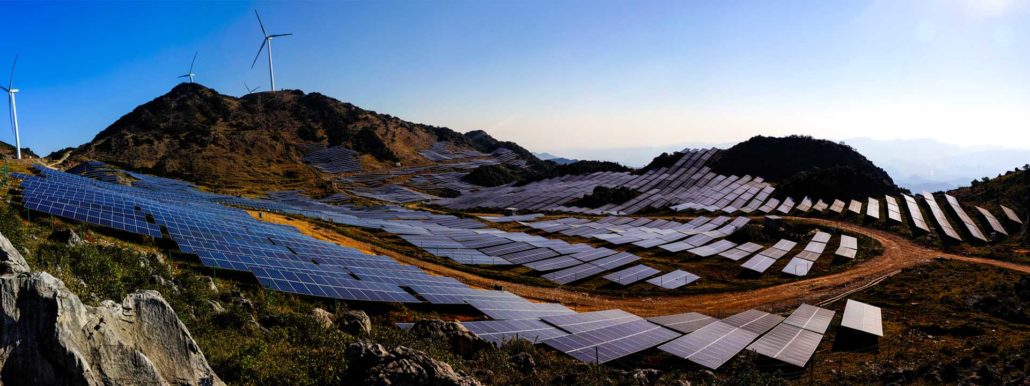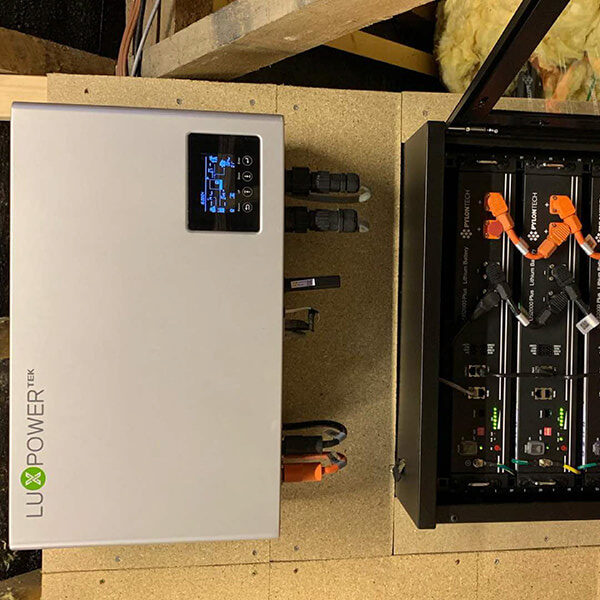Les onduleurs solaires pour les particuliers sont de plus en plus populaires. Les onduleurs solaires domestiques sont principalement utilisés pour convertir le courant continu en courant alternatif dans les appareils ménagers. Aujourd'hui, des systèmes de surveillance des onduleurs sont disponibles sur le marché pour vous aider à contrôler le fonctionnement de l'ensemble de l'onduleur. L'électricité excédentaire produite peut également être vendue à l'administration nationale de l'électricité.
Types d'onduleurs solaires pour les particuliers

Onduleur à cordes
Comme son nom l'indique, plusieurs panneaux solaires sont connectés en série à l'onduleur, qui convertit le courant continu généré en courant alternatif. Il s'agit également de l'un des premiers onduleurs solaires pour la maison. Il est peu coûteux et plus proche de la boîte à fusibles et du compteur électrique. Le problème de ces onduleurs solaires domestiques est que si l'efficacité d'un panneau diminue, le reste des panneaux diminuera également.
| Pour | Cons |
|---|---|
| Faible coût | Impossibilité de contrôler les performances des panneaux individuels |
| L'efficacité est fortement influencée par les ombres | à n'utiliser que pour les systèmes simples |
| Durable | Point de défaillance unique |
| Facile à entretenir |

Micro-onduleurs
À ne pas confondre avec un optimiseur de puissance. La puissance collectée est généralement envoyée à un onduleur central, qui convertit le courant continu en courant alternatif. Au niveau des modules, les micro-onduleurs installés sur chaque panneau tendent à optimiser la puissance de chaque panneau. Par conséquent, chaque onduleur attaché à chaque panneau convertit l'électricité continue en électricité alternative.
Les ombres sur un panneau ont peu d'effet sur les autres panneaux, ce qui se traduit par une variété réduite ou des performances inefficaces. Les micro-onduleurs ont été identifiés comme les meilleurs onduleurs solaires pour les ménages et les entreprises. Alors que leur prix était autrefois prohibitif, ils sont récemment devenus plus abordables.
| Pour | Cons |
|---|---|
| Système flexible, facile à utiliser | Coût élevé |
| Haute performance | Difficile à maintenir |
| Les panneaux peuvent surveiller individuellement | Les composants électriques sont situés sur le toit |
| Facile à remplacer |

Onduleur solaire hybride
Il s'agit d'un onduleur multimode qui nécessite l'installation d'une batterie et d'un onduleur. En plus de fournir du courant continu aux batteries, un onduleur solaire hybride fournit également du courant alternatif au réseau et à vos appareils ménagers. Lorsque la fonction MPPT est activée, elle permet de suivre la quantité d'énergie dont les batteries ont besoin et le moment où elles peuvent l'obtenir à moindre coût auprès du réseau.
Vous pouvez utiliser ce régulateur de charge pour transférer l'énergie supplémentaire vers le réseau une fois que la batterie est complètement chargée. Au lieu de s'éteindre complètement, cet onduleur solaire domestique peut se mettre en veille en cas de problème.
| Pour | Cons |
|---|---|
| Système flexible, facile à utiliser | Coût élevé |
| Haute performance | Difficile à maintenir |
| Les panneaux peuvent surveiller individuellement | |
| Peut être utilisé hors réseau ou connecté au réseau |

Onduleur central
Il est similaire à un onduleur de branche, mais au lieu d'introduire les branches du panneau dans l'onduleur, toutes les branches du panneau sont connectées et insérées dans une barre de bus. Toutes les chaînes de panneaux sont connectées et insérées dans une barre omnibus. Étant donné que l'onduleur n'utilise que le boîtier et les blocs d'alimentation, son coût d'installation est minime. En outre, il est moins susceptible de subir des dommages physiques ou naturels.
En effet, ils sont conservés dans une zone protégée qui n'est pas affectée par les intempéries, car ils ont une plus grande capacité que les onduleurs de branche et les micro-onduleurs. C'est pourquoi ils sont principalement utilisés dans les grandes propriétés.
| Pour | Cons |
|---|---|
| Prix bas | Grand volume |
| Durable | Difficile à maintenir |
| Grande capacité |

Batterie d'onduleur pour la maison
La plupart des systèmes solaires hors réseau chargent leurs propres batteries. En revanche, les systèmes solaires ont du mal à charger complètement leurs batteries en hiver ou lorsqu'il y a beaucoup d'ombres.
Ce type de batterie d'onduleur domestique est bidirectionnel, ce qui signifie qu'il peut être utilisé comme chargeur de batterie et comme onduleur. Les onduleurs hors réseau, reliés au réseau ou interactifs avec le réseau peuvent être utilisés à la maison. Ce système nécessite un alternateur pour initier la conversion du courant alternatif en courant continu et vice versa.
| Pour | Cons |
|---|---|
| Prix bas | Petite capacité |
| Améliorer les performances | Difficile à maintenir |
| petit volume | Composants électriques situés sur le toit |
| Contrôler les performances des différents panneaux | Maintenance |
Quel type d'onduleur solaire pour la maison choisir ?
C'est une question qui n'a pas de réponse unique mais qui est particulièrement fréquente. Parce qu'il s'agit des meilleurs onduleurs solaires pour les particuliers, le prix d'un onduleur n'est pas bas. De plus, les onduleurs jouent un rôle essentiel dans l'ensemble du système solaire. C'est pourquoi de nombreux facteurs doivent être pris en compte au moment de choisir le type d'onduleur à acheter.
3 phases ou monophasé
Votre onduleur solaire raccordé au réseau doit être compatible avec votre réseau. Cela signifie que vous pouvez installer un système plus important dans la plupart des endroits et continuer à exporter de l'électricité vers le réseau. Vous aurez moins de choix d'onduleurs si vous disposez d'une connexion triphasée (qui est moins répandue dans les locaux résidentiels). Ils sont aussi généralement plus chers.
Surface du toit
Si vous envisagez d'acheter un onduleur string, vous voudrez savoir quel est son niveau de MPPT. Cette valeur définit le nombre d'orientations possibles pour l'installation des panneaux. Si vous souhaitez placer des panneaux solaires à l'est, au nord et sur la pente ouest de votre toit, un onduleur domestique typique à deux MPPT ne sera pas très efficace. Il limitera la production parce que les deux orientations seront sur la même chaîne.
Si vous avez trois directions ou plus, vérifiez si votre onduleur solaire dispose de trois MPPT ou plus, ou abordez le problème en utilisant un micro-onduleur ou un optimiseur de puissance.
Impacts de l'ombrage
Vérifiez si les ombres influencent votre toit à différents moments de la journée et de l'année. Vous pouvez même grimper au sommet et jeter un coup d'œil si cela ne présente pas de danger. Toutefois, n'oubliez pas que le soleil projette une ombre beaucoup plus importante en hiver qu'en été.
Si les ombres sont un problème sur votre toit, vous n'aurez pas d'autre choix que d'installer un micro-onduleur ou un optimiseur de puissance. La dépense initiale supplémentaire sera rapidement amortie et la résistance à l'ombre améliorera la production. Il est également judicieux d'utiliser des panneaux solaires à moitié coupés, qui peuvent contribuer à la résistance à l'ombre.
Budget
Supposons que le choix d'un onduleur solaire pour une maison se fasse uniquement en fonction de son efficacité. Les micro-onduleurs sont alors une évidence. Cependant, la plupart des propriétaires de systèmes domestiques ne peuvent pas se les offrir en raison de leur coût exorbitant. Un onduleur string produira des résultats comparables si le système électrique primaire et le toit ne sont pas ombragés par le soleil. En outre, les meilleurs fabricants offrant les meilleures garanties sont généralement plus chers.

